HomeStream
News & more!Escapes
My trip reviewsGallery
My travel photosPlanning
Trip planningGuides
Destination guides
My Escapes  Spain
Spain  Valencia
Valencia  Frenetic Valencian Escape!
Frenetic Valencian Escape!  The Sprawling Architectural Diversity of Valencia
The Sprawling Architectural Diversity of Valencia
The Sprawling Architectural Diversity of Valencia
Architecturally, Valencia seemed more colourful than Madrid and, at the same time more contrastful and more delicate than Barcelona.
In addition, it was a lot cleaner than the other two big cities!
Exploring Valencia, spotting beautiful buildings was a frenetic joyful experience. I'm hankering to repeat it sometime in the future!
After starting out from the Plaza de Ayuntamiento, I explored the central area by entering its eastern parts. Large and small, old and modern buildings coexist in a contrasful architectural collection. Most of them are in unbealievably good state!
What's very interesting that apart from Barcelona, I was literally walking with my camera constantly in my hand. Couldn't put it down!
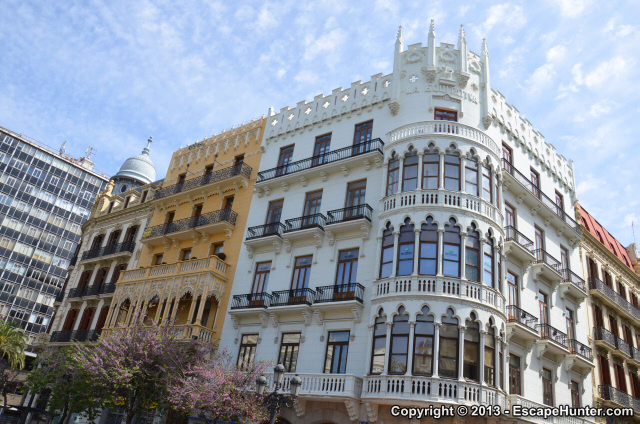
View Photo Gallery for more travel photos
In some ways, I like Valencia more than Barcelona... I would never have thought that any other European city would come even close to Barcelona after having visited it so many times... but indeed, Valencia has deeply impressed me.
My strongest reasons for feeling like this are: it's a lot cleaner, it's architecturally more diverse, the buildings are in better shape, there are less shady creeps - therefore I felt safer even during night walks!
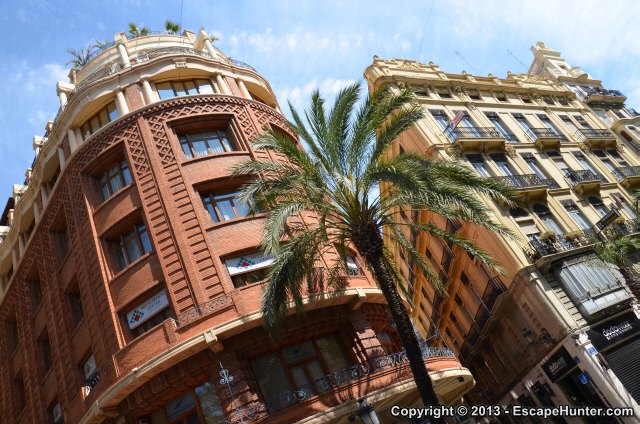
Entering the Carrer de les Barques from the Plaça de l'Ajuntament: bustling busy street with exotic palms
View Photo Gallery for more travel photos
The following architectural styles are well-represented in Valencia: Renaissance, Baroque, Modernist, Classical, Beaux-Art, Art Nouveau and even Santiago Calatrava's futuristic designs, there's a vast amount fo architectural works of art of art that you can admire all around.
Of course, the characteristic Mediterranean atmosphere of the Old Town is also there.

One of many typical buildings in the Old Town
View Photo Gallery for more travel photos
The Iberian Peninsula is generally colourful, but there are noticeable differences between architecture in central Spain and Anadalucía, Catalonia, the Valencian Community and other areas. It's obvious that Valencia and Barcelona have a lot in common.
But, apart from Gaudí's artwork, Barcelona isn't as delicate as Valencia is. The finesse of decorations I've seen in Valencia surpass what I've found in Madrid and Barcelona.
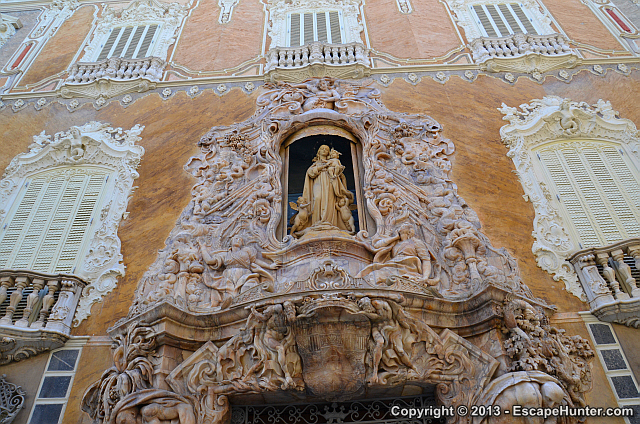
The entrance of the fantastic Rococco Palace - Palacio del Marques de Dos Aguas
View Photo Gallery for more travel photos
Personally, I loved Valencia's streets more than Barcelona's, but overall the latter would prevail primarily because of major works like the Sagrada Família church also, because the Catalan capital is vastly bigger than the Valencian.
During my first visit, curiosity attracted me north of the Town Hall, where I found myself surrounded with classical buildings that were in excellent condition.
But the buildings sighted in the distance attracted me magnetically even deeper.
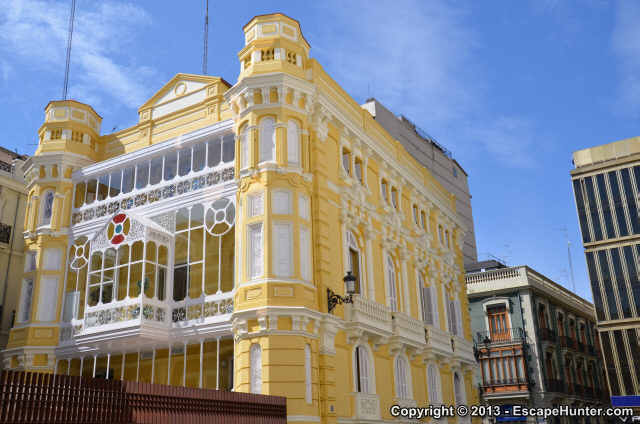
Beautiful yellow building on the Monjas de Santa Catalina Street. Singaogue-like design...
View Photo Gallery for more travel photos
Although, not only the individual buildings looked great, but the contrast between the old and new as well. Though, I'm still a fan of the old. It has warmth, it has soul, looks more natural.
My favourite building in this city is the Banco de Valencia building, situated at the end of the Carrer de les Barques (wide street which starts out from the Plaça de l'Ajuntament).
The Banco de Valencia building stood there at the corner, right at the spot where the Carrer de les Barques ends (splitting into two other streets).
It was impossible not to notice this building already from the distance, even without walking in to the Carrer de les Barques.
This building is a representative of the Beaux-Arts style. The prominent bank building was finalized in 1942.
The richly decorated upper section of this 10-story building is a true delicacy!
Rather unusual is the pink colour and the roof...
If you look closely, then its upper part resembles a delicious creamy cake. You might want to eat it... Tasty design, indeed!
At the time of my visit, the Banco de Valencia was still the 6th largest bank in Spain.
Of course, while exploring you might also want to take a rest... there are many parks in the city, one of them is the Parque Parterre with the Palacio de Justicia constructed between 1758 and 1802.
The building has underwent various physical transformations and has swapped functions several times, having finally become the Palace of Justice in 1914.
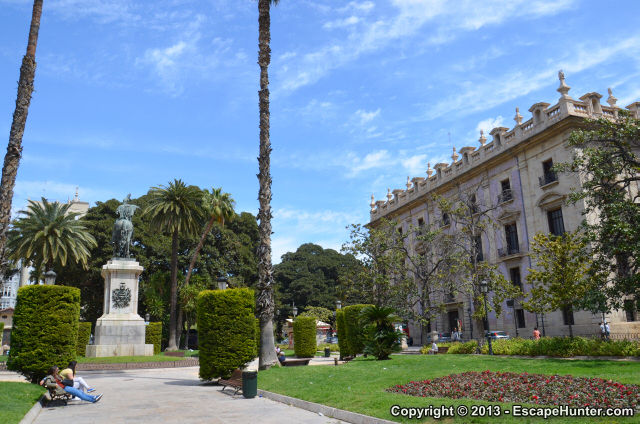
Parque Parterre has gigantic palmtrees and an immense ancient ficus tree.
Notice the Palacio de Justicia on the right with its light greyish-violet coloured walls.
View Photo Gallery for more travel photos
There's also contrast and even combination of old and modern architecture...
Below you'll be able to see how old and modern coexist in a harmony of colour, even though the shapes are strongly in contrast.
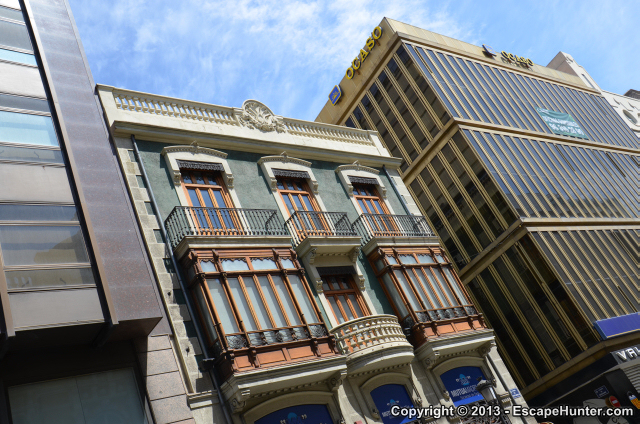
Somehow this reminded me of Kuala Lumpur...
View Photo Gallery for more travel photos
As a fan of Art Nouveau, I rejoiced after discovering a plethora of the style's local representatives.
As opposed to Barcelona, in Valencia there are lots of art nouveau buildings scattered here and there, instead of one or two major notorious monuments.
Also: there are wider areas where you can see lots of Art Nouveau buildings side by side... Whereas, in Barcelona or Budapest, one usually has to walk to a longer distance in order to find the next one.
For Valencian Art Nouveau delicacies, go find the Carrer Pau (Calle Paz) (not far from the Cathedral, in fact it opens from the Plaza de la Reina, found right in front of the Cathedral.
It was evening, a slightly dark and the street was shady as well, therefore my images couldn't capture the colours well enough.
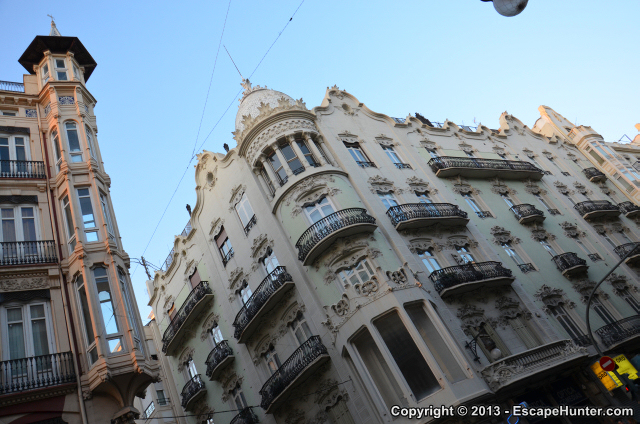
Beautiful Art Nouveau buildings one after another along Carrer Pau (Calle Paz)
View Photo Gallery for more travel photos
The streets in the central area were squeeky-clean, nothing like the slumish areas in central Barcelona and Madrid where I even saw rats running around, not to mention the disheveled street whores.
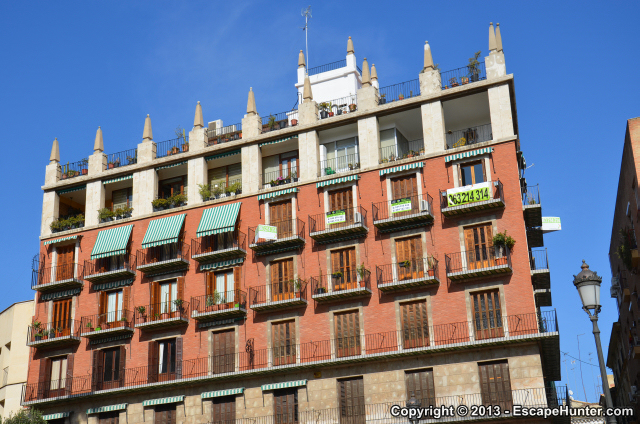
And old houseblock with Valencian dynamism
View Photo Gallery for more travel photos
The modern office spaces are often combined with residential areas.
Unusual forms suggesting dynamism boast in colour... There's also plenty of green around, so I didn't feel like I was in a suffocating modern glass, metal and concrete jungle.
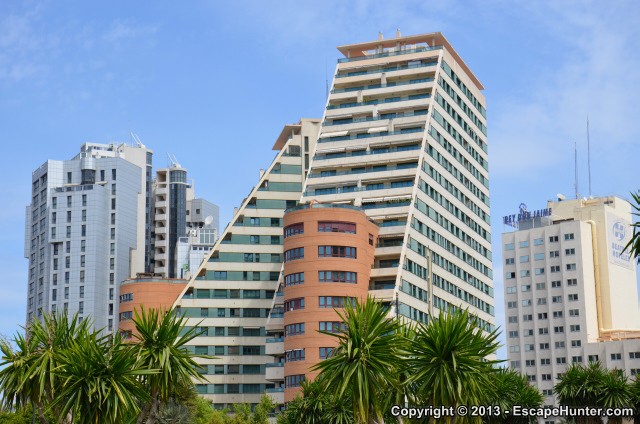
Modern building complex near the Puente de Angel Custodio Bridge
View Photo Gallery for more travel photos
The living quarters are stylized, many houseblocks bearing elements of traditional/old architecture.
Houseblocks although modern, look beautiful in their own Valencian way (unlike ugly greyish houseblocks in the former communist countries).
Otherwise the truly modern buildings have characteristic Hispanic dynamism in them (reflect by the specific shapes of the decorative elements and there's also plenty of colour...).
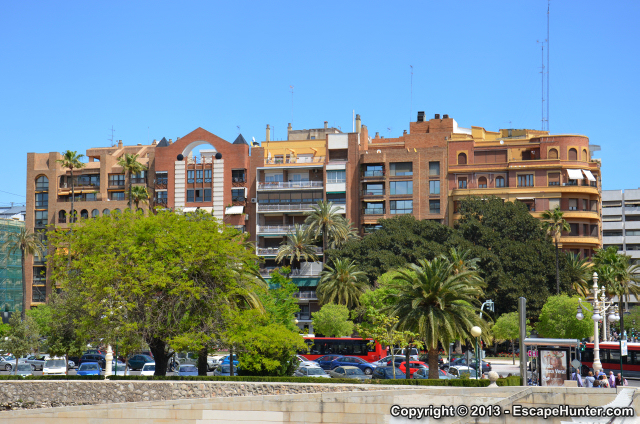
Modern hoseblock in Valencia
View Photo Gallery for more travel photos
As for more modern architecture... Santiago Calatrava's hypermodern-surreal work can be admired at the famous City of Arts and Sciences complex...
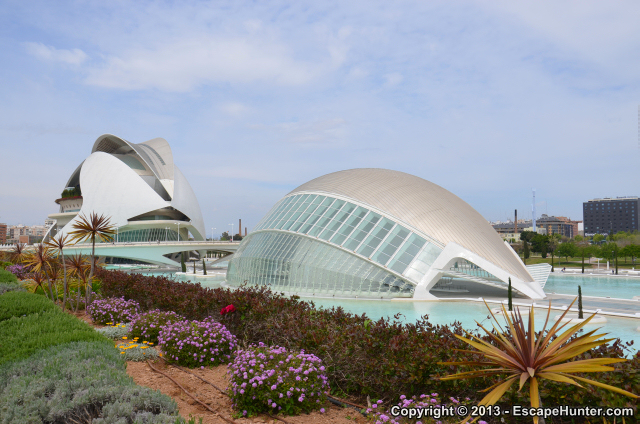
The City of Arts and Sciences
View Photo Gallery for more travel photos

About the Author:
Escape Hunter, the young solo traveler in his early 30's explores the World driven by curiosity, thirst for adventure, deep passion for beauty, love for freedom and diversity.
With a nuanced, even humorous approach to travel, an obsession for art and design, Escape Hunter prefers to travel slowly, in order to learn and "soak up" the local atmosphere...
Comments

As "Escape Hunter" - the curious incognito traveler with an insatiable drive to explore, I embark on slow and deep travels around
our beautiful World.
Join me and I will show you exciting destinations
"from within", through my
"escape" trips!

Travel Slang Dictionary
Guide to my personal travel slang vocabulary, which seasons my content...

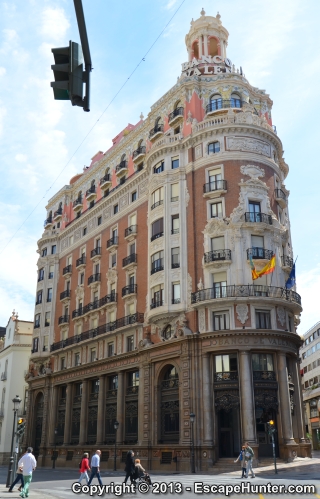





Colourful buildings on the Plaza de Ayuntamiento